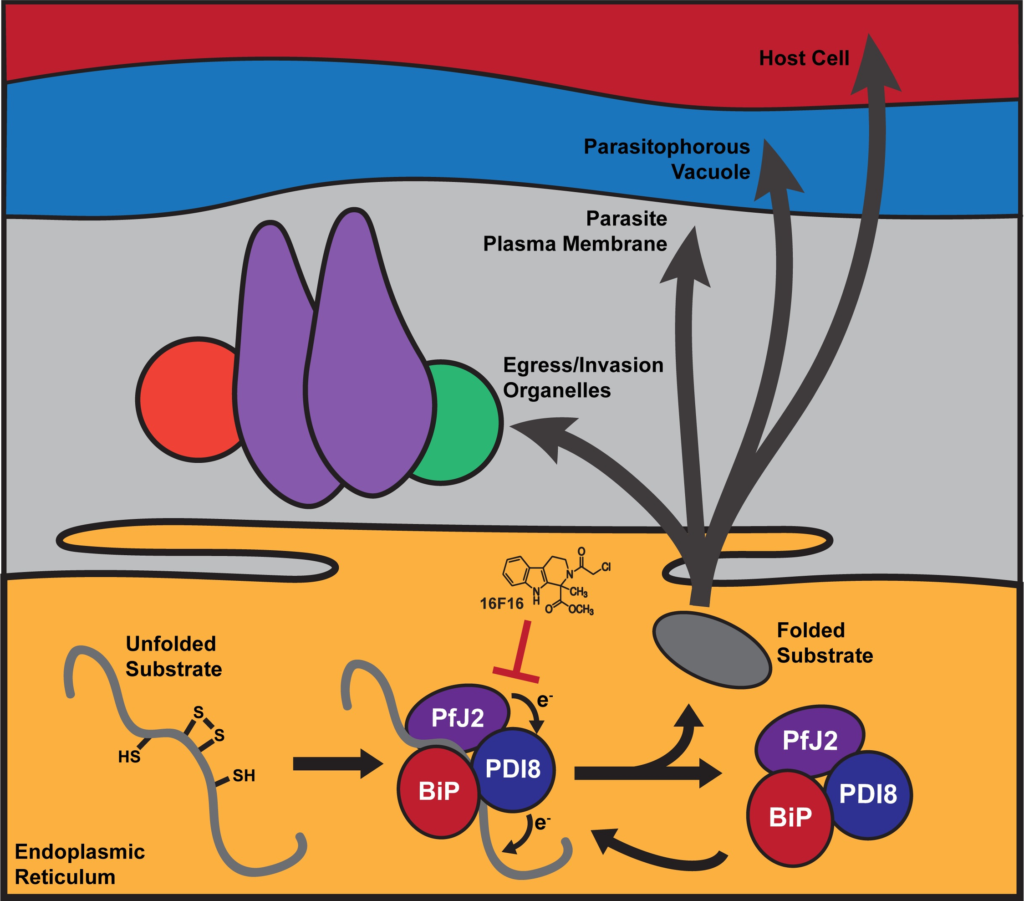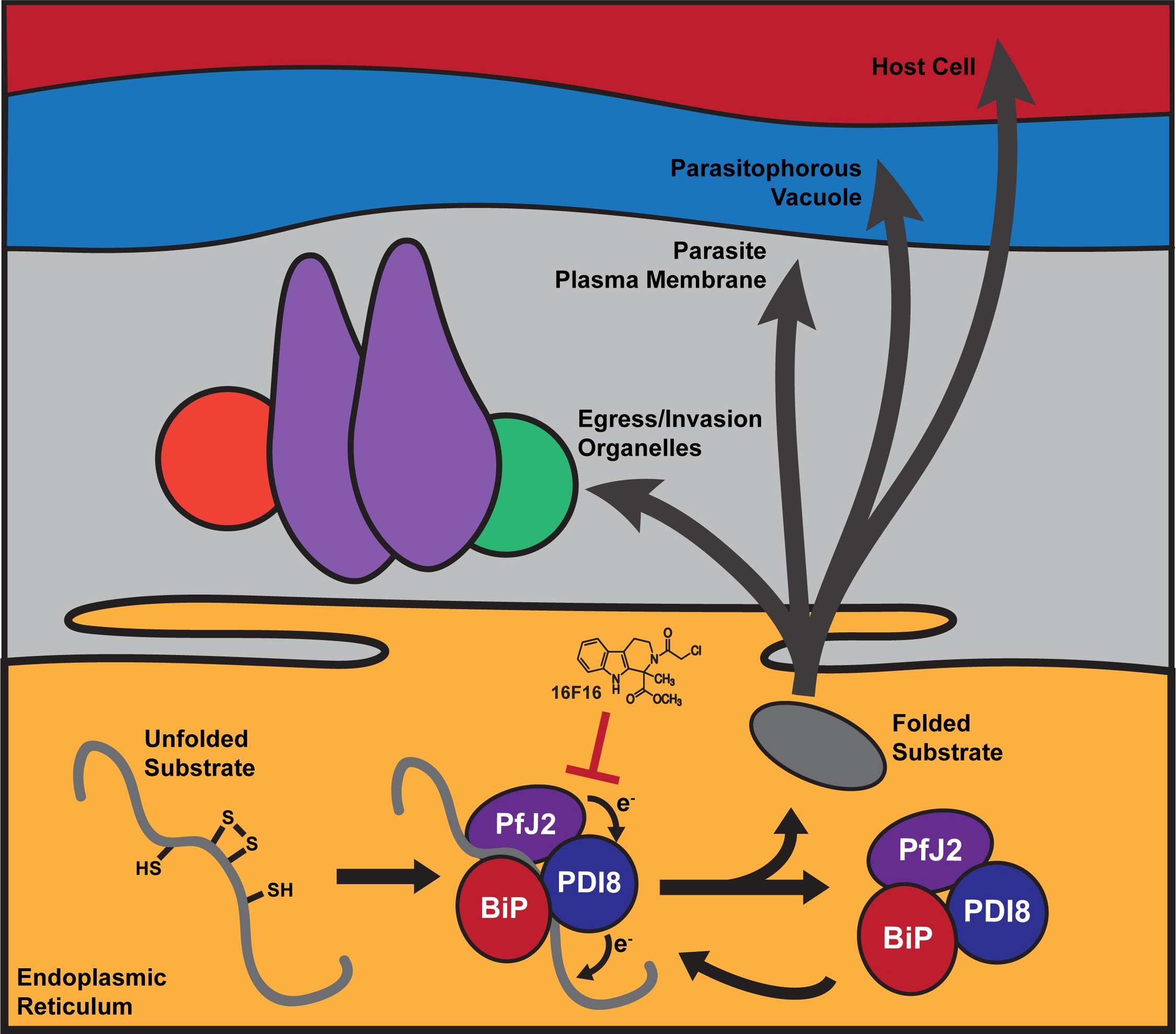A redox-active crosslinker reveals an essential and inhibitable oxidative folding network in the endoplasmic reticulum of malaria parasites

Malaria remains a major global health problem, creating a constant need for research to identify druggable weaknesses in P. falciparum biology. As important components of cellular redox biology, members of the Thioredoxin (Trx) superfamily of proteins have received interest as potential drug targets in Apicomplexans. However, the function and essentiality of endoplasmic reticulum (ER)-localized Trx-domain proteins within P. falciparum has not been investigated. We generated conditional mutants of the protein PfJ2-an ER chaperone and member of the Trx superfamily-and show that it is essential for asexual parasite survival. Using a crosslinker specific for redox-active cysteines, we identified PfJ2 substrates as PfPDI8 and PfPDI11, both members of the Trx superfamily as well, which suggests a redox-regulatory role for PfJ2. Knockdown of these PDIs in PfJ2 conditional mutants show that PfPDI11 may not be essential. However, PfPDI8 is required for asexual growth and our data suggest it may work in a complex with PfJ2 and other ER chaperones. Finally, we show that the redox interactions between these Trx-domain proteins in the parasite ER and their substrates are sensitive to small molecule inhibition. Together these data build a model for how Trx-domain proteins in the P. falciparum ER work together to assist protein folding and demonstrate the suitability of ER-localized Trx-domain proteins for antimalarial drug development.
David W. Cobb, Heather M. Kudyba, Alejandra Villegas, Michael R. Hoopmann, Rodrigo P. Baptista, Baylee Bruton, Michelle Krakowiak, Robert L. Moritz, Vasant Muralidharan. PLoS Pathog. 2021 Feb 3;17(2):e1009293. doi: 10.1371/journal.ppat.1009293.

